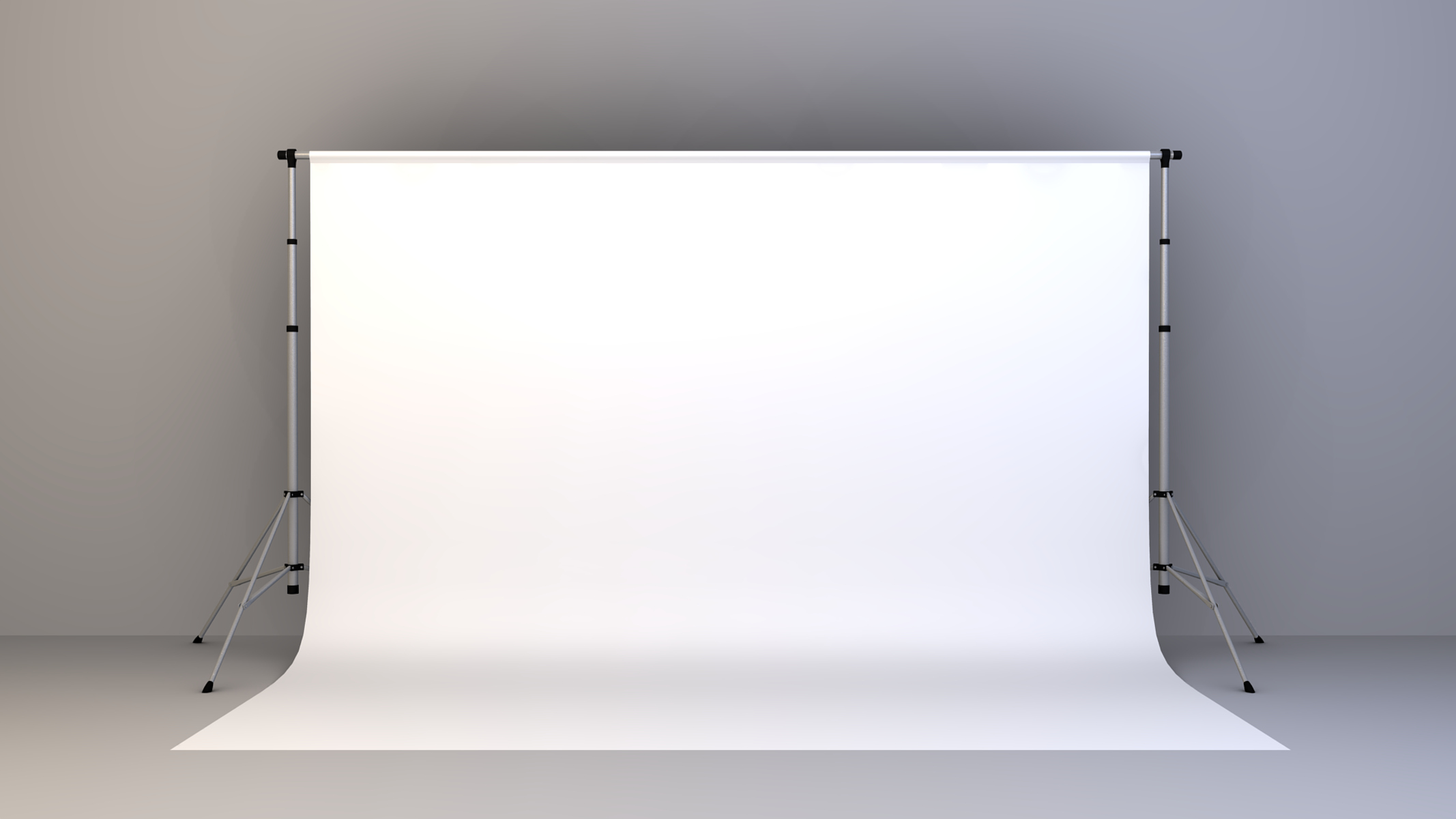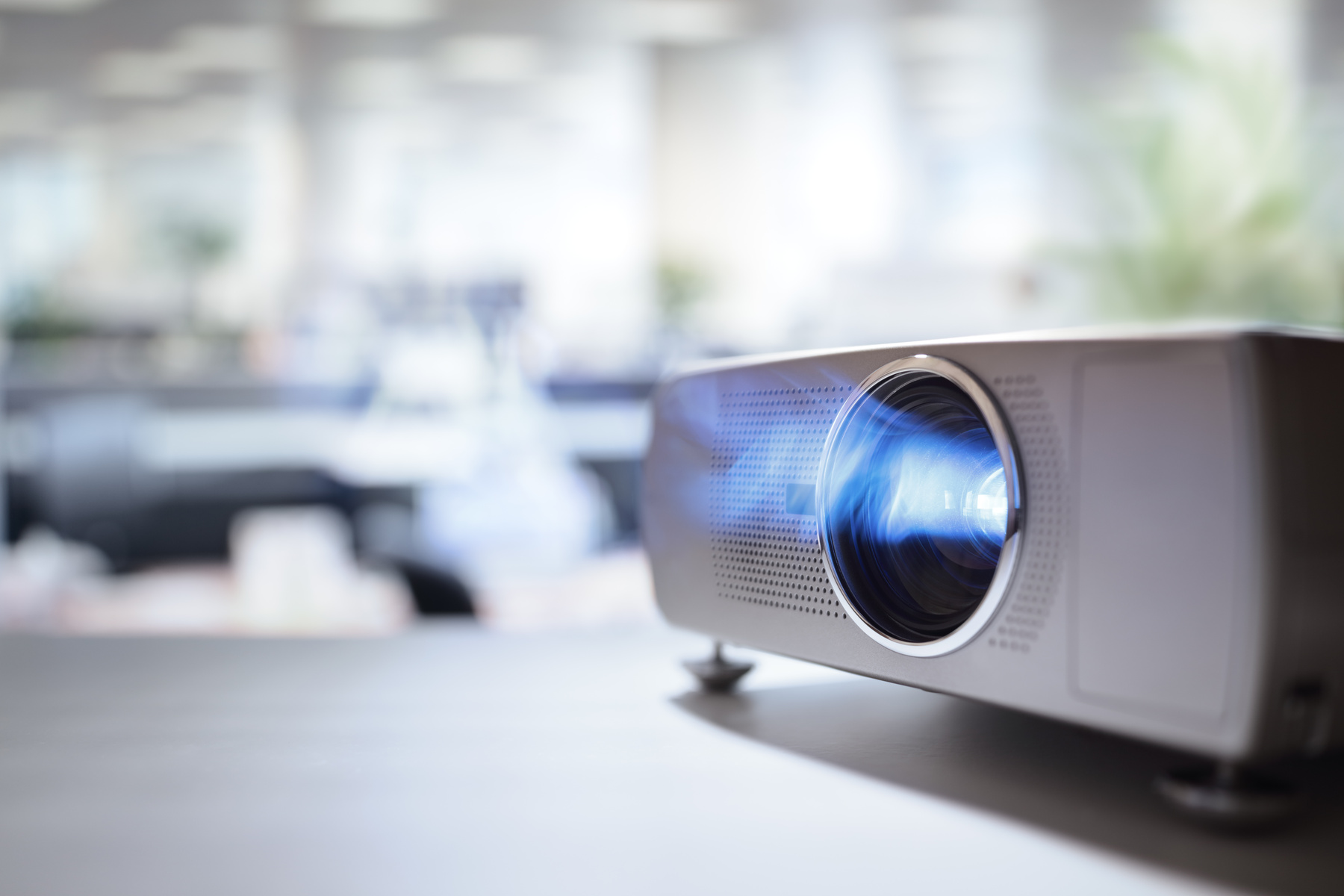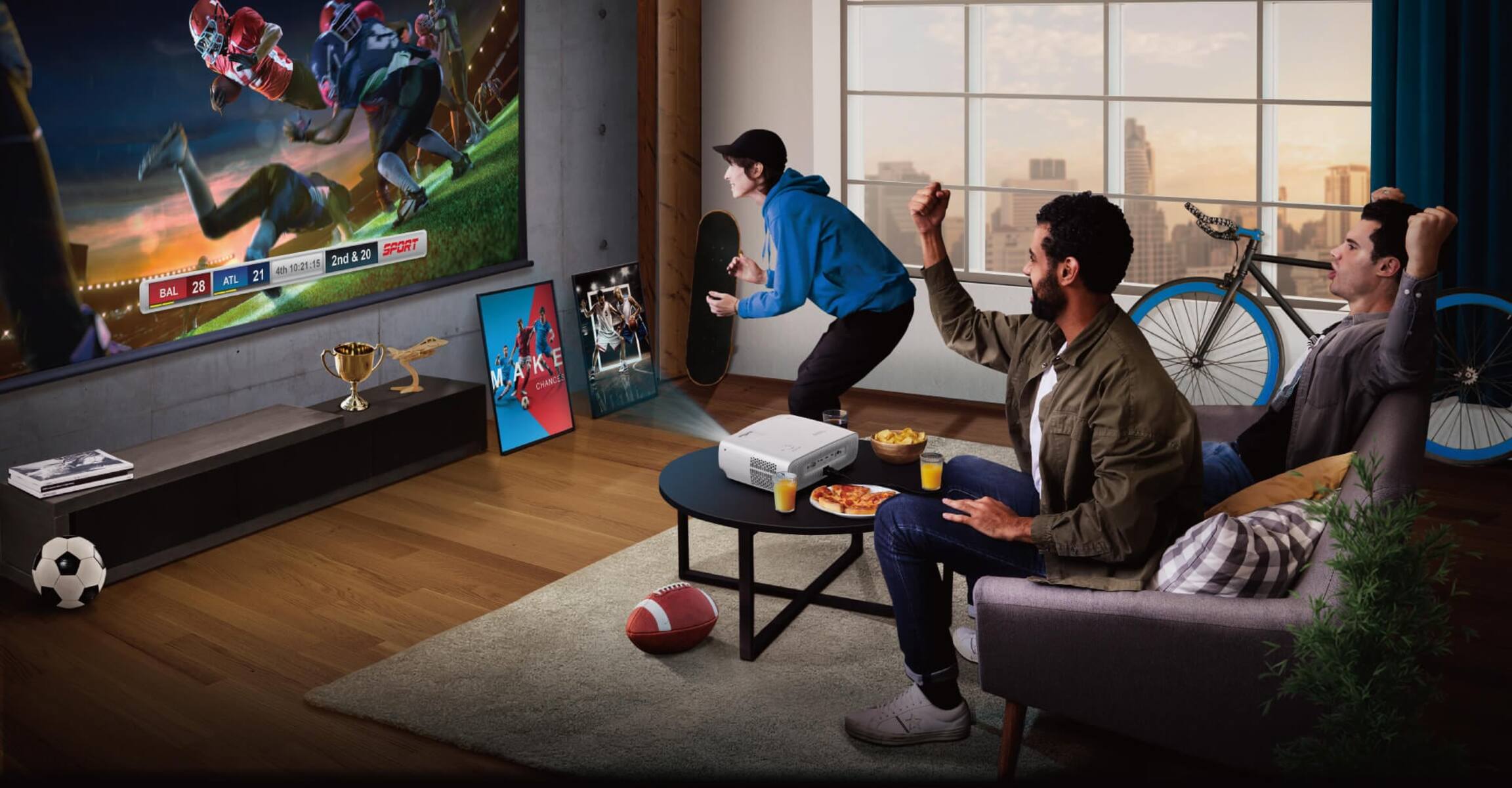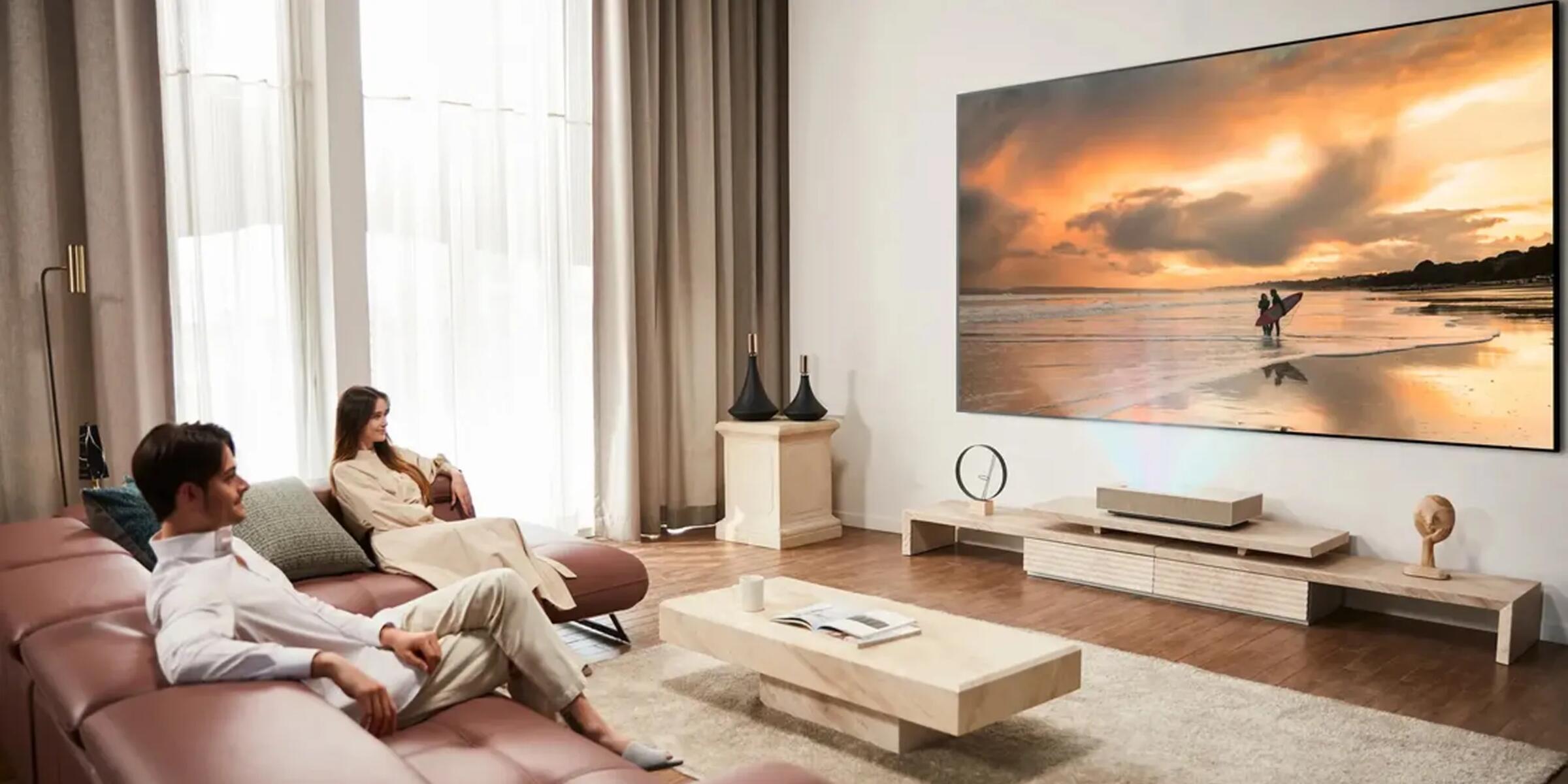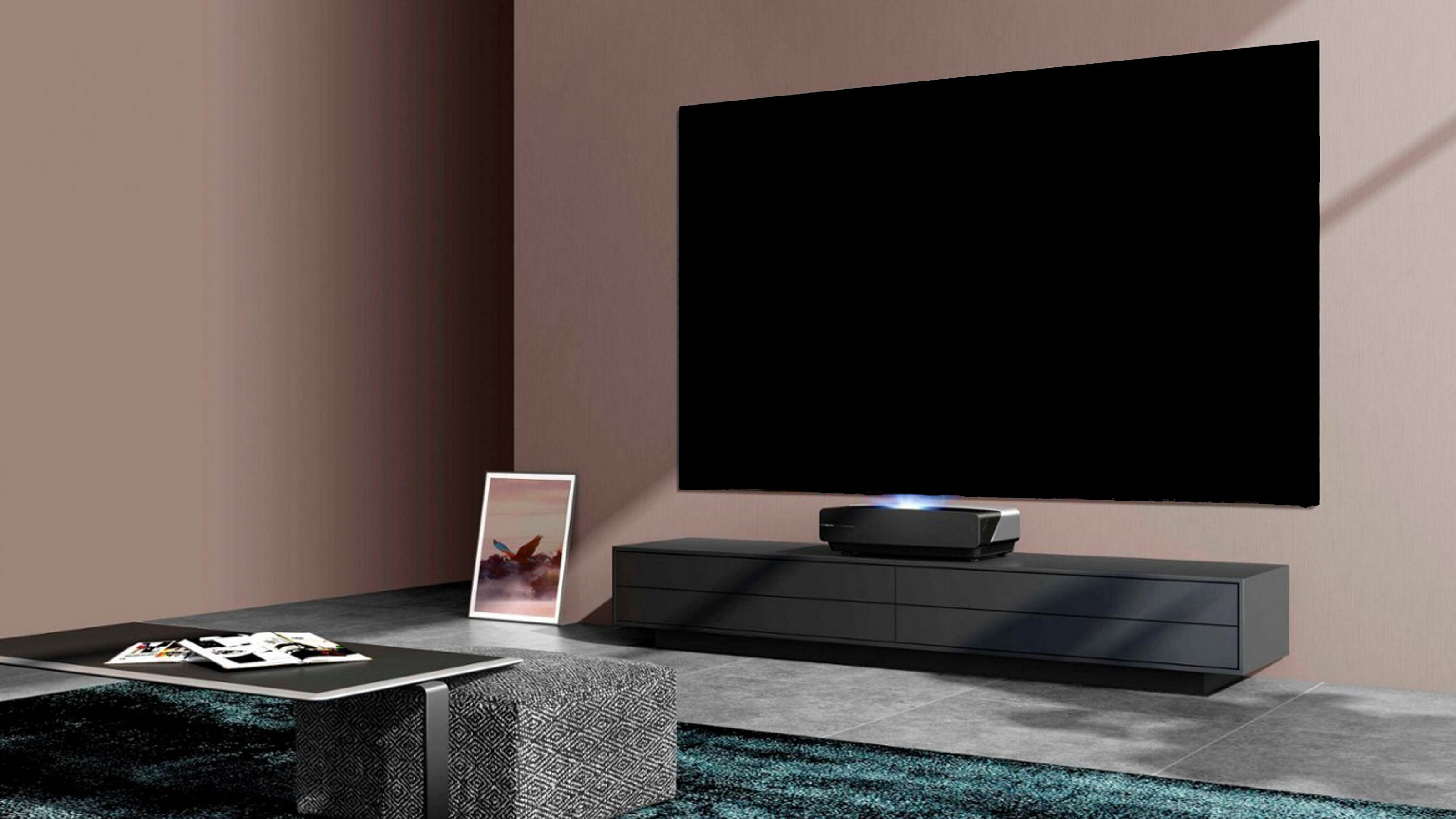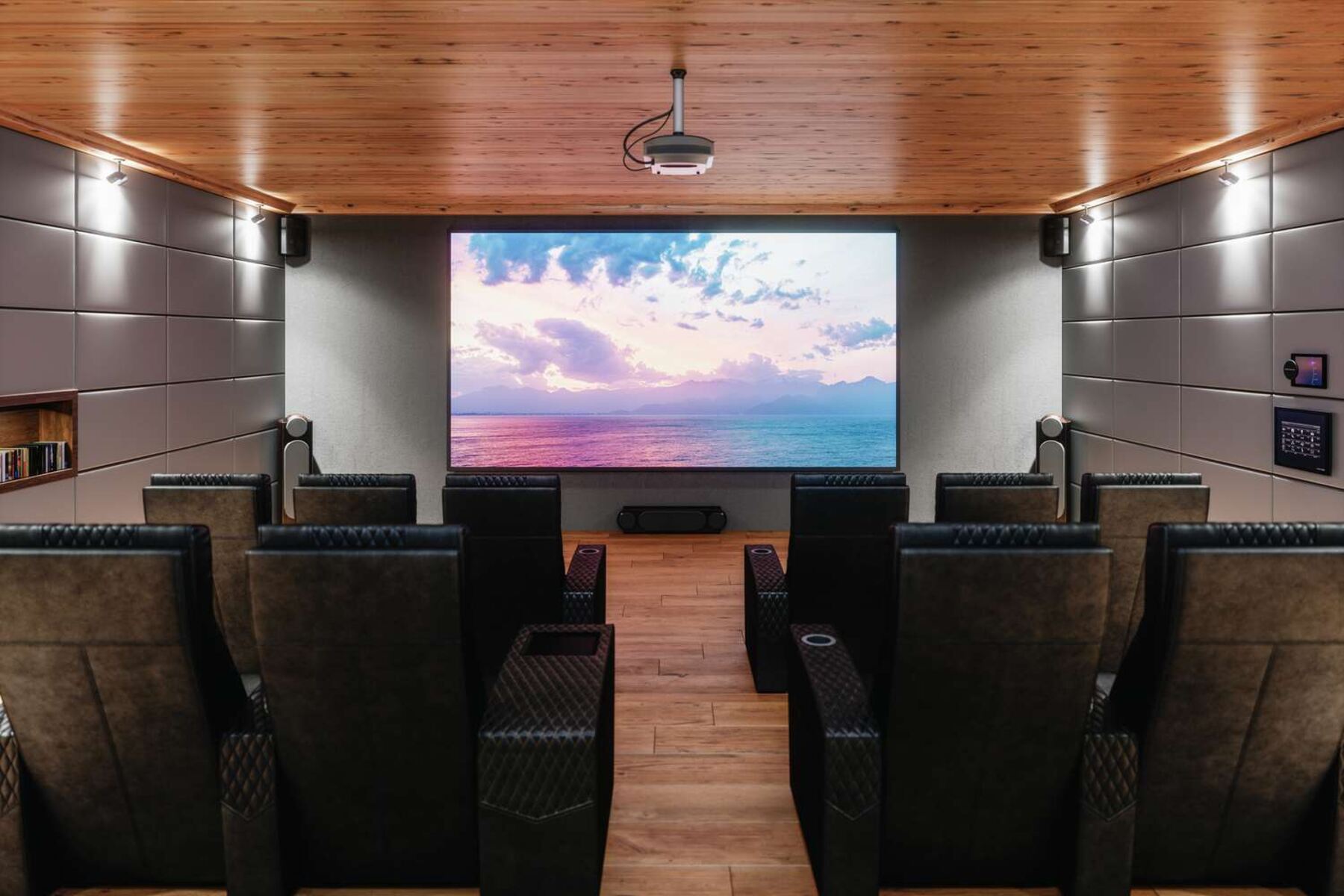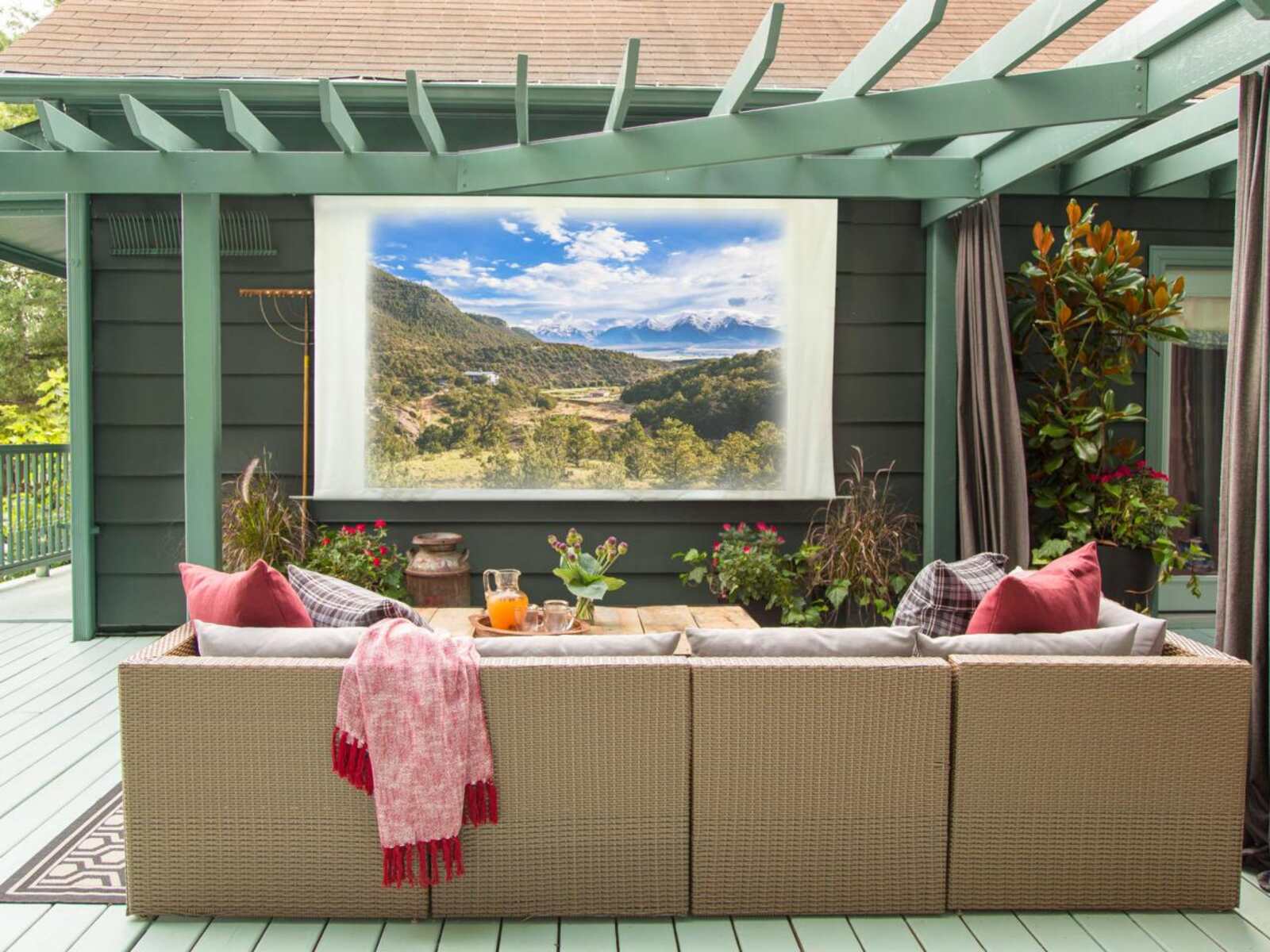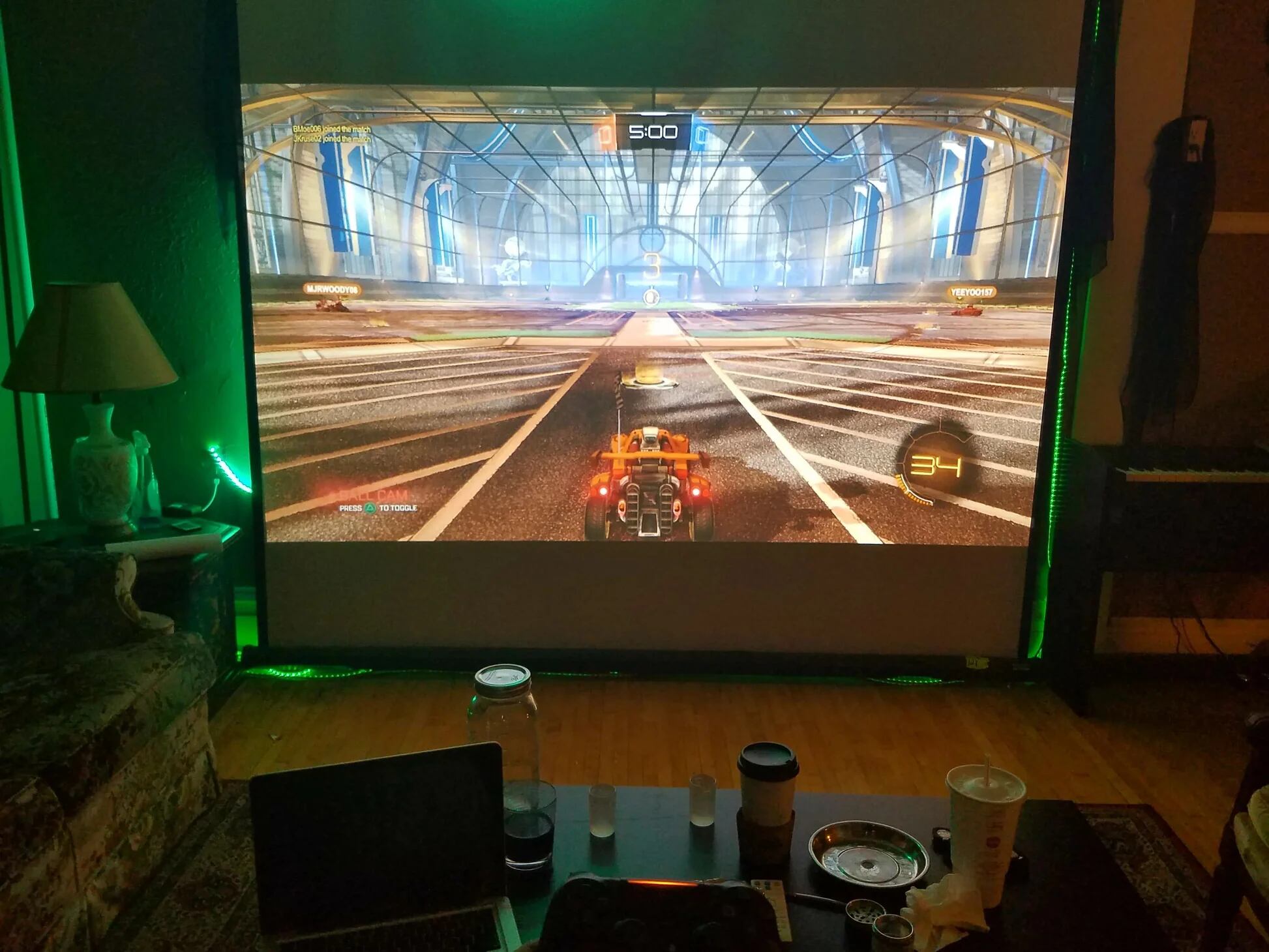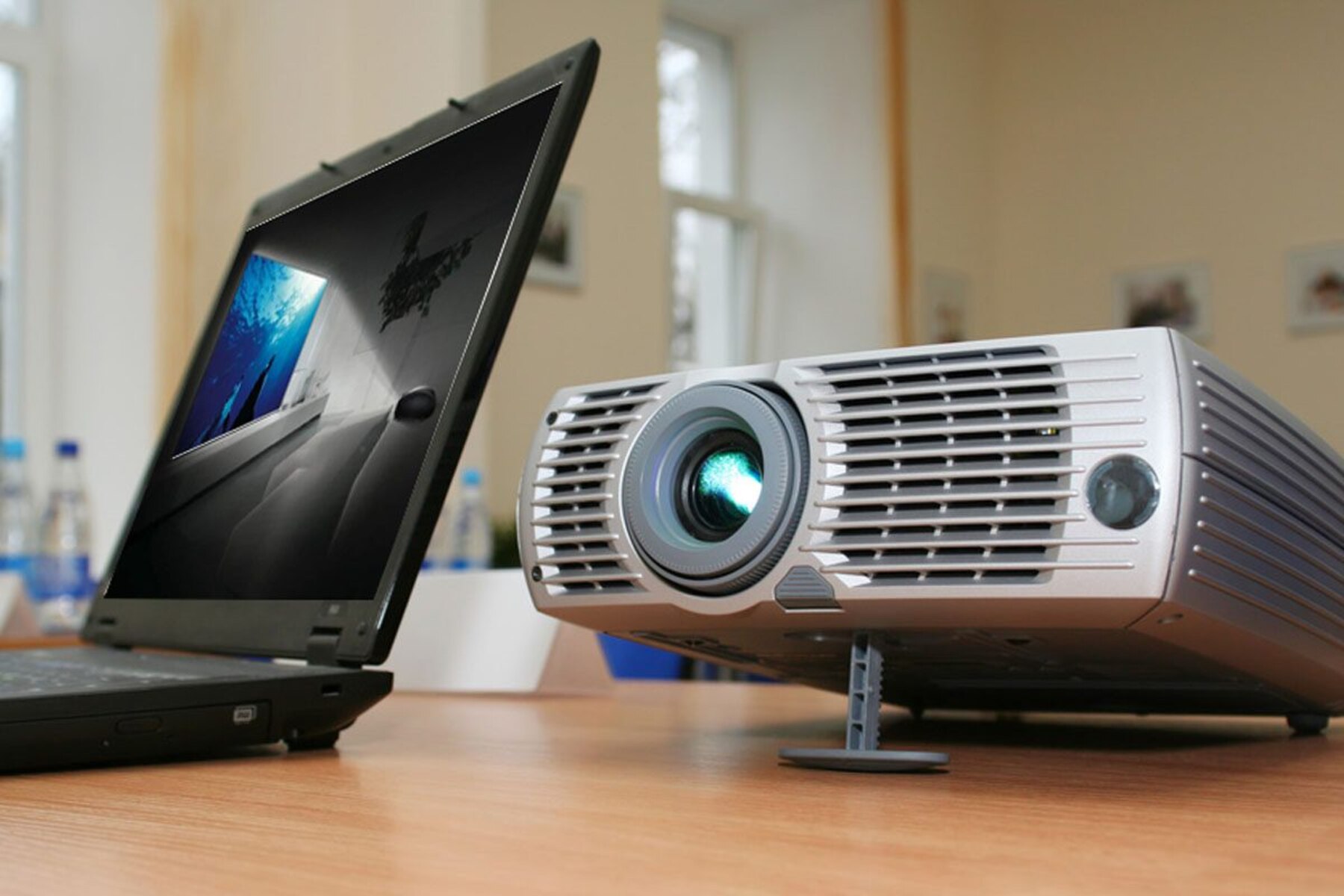Introduction
When it comes to setting up a home theater or a multimedia room, having a good projector screen is crucial for an immersive viewing experience. However, not everyone has the luxury of buying a commercial projector screen. The good news is that there are several affordable and creative alternatives that can be used as a projector screen. In this article, we will explore some of these options and discuss their pros and cons.
Whether you’re on a budget or looking for a DIY solution, there are various materials and surfaces that you can use to create a makeshift projector screen. These alternatives range from simple household items to specialized fabric and paint specifically designed for projection.
Before we delve into the different options, it’s important to note that while they may not provide the exact same image quality and performance as a commercial projector screen, they can still deliver impressive results when used correctly. It’s all about finding the best solution that suits your needs and budget.
In the following sections, we will explore options such as painted walls, blank wall spaces, bed sheets, shower curtains, projector screen fabrics, DIY projector screens, projection screen paint, outdoor options, and commercial projector screens. Each option has its own characteristics and considerations, so let’s dive in and find the best alternative for your projector screen needs.
Painted Wall
One of the simplest and most cost-effective alternatives to a commercial projector screen is using a painted wall. If you have a blank wall in your room, painting it with a high-quality white or light gray projector screen paint can produce satisfactory results.
To create a painted wall projector screen, you will need to ensure that the wall surface is smooth, clean, and free from any imperfections that could affect the image quality. It’s important to apply the projector screen paint evenly and follow the manufacturer’s instructions for the specific paint you choose.
While painting a wall may seem straightforward, there are certain considerations to keep in mind. Ambient light, for example, can greatly impact the image quality. It’s best to use this setup in a room with controlled lighting conditions, such as a dedicated home theater or a room with blackout curtains.
Another factor to consider is the wall color. Using a light-colored wall will provide better contrast and minimize any color distortion, while a dark-colored wall may result in a washed-out image. Additionally, investing in a good projector with high brightness and contrast capabilities can help overcome some of the limitations of using a painted wall.
One of the advantages of using a painted wall is that it eliminates the need for a separate screen installation. It seamlessly blends into your room decor and allows for easy customization of screen size based on the available wall space. Plus, the cost of projector screen paint is relatively low compared to other screen options.
However, it’s important to note that a painted wall may not provide the same level of image detail and uniformity as a dedicated projector screen. The surface texture of the wall and the quality of the paint can impact the overall image quality, resulting in slight variations in brightness and color reproduction.
Despite these potential drawbacks, a painted wall can be a viable solution for those on a tight budget or for temporary setups. With proper preparation and the right paint, you can create an enjoyable viewing experience in your home theater or multimedia room.
Blank Wall Space
If you don’t have a suitable wall for painting or prefer not to alter your wall’s appearance, utilizing a blank wall space as a projector screen is another option to consider. This method entails projecting the image onto a plain, light-colored wall without any additional surface treatments.
The benefit of using a blank wall space is the convenience and simplicity it offers. You can simply position your projector and adjust it to project onto the desired area of the wall. It eliminates the need for extra materials or installations, making it a hassle-free solution.
When using a blank wall, you should consider the wall’s color and texture. Light-colored walls are ideal for optimal contrast and brightness. Smooth surfaces also yield better image quality, as rough textures may cause uneven light reflection and distortion.
To enhance the image clarity and definition, it’s recommended to have a darkened room environment. Controlling ambient lighting by using blackout curtains or dimming the lights will help to minimize glare and improve contrast.
While using a blank wall space is a budget-friendly option, it’s important to acknowledge a few limitations. Blank walls lack the specialized surface treatments and materials found in commercial projector screens, which could result in slightly reduced image quality, such as decreased brightness or color accuracy.
Additionally, since walls are typically larger than standard projector screens, the image size may be limited by the available wall space. This means you might not achieve the same level of flexibility in adjusting the screen size as you would with a dedicated projector screen.
Nevertheless, if you have a suitable wall and are willing to accept some compromises in image quality, using a blank wall space can be an effective and convenient solution for your projection needs.
White Bed Sheet
If you’re looking for a quick and inexpensive alternative for a projector screen, a white bed sheet can come to the rescue. It’s a readily available household item that can be repurposed to create a makeshift projection surface.
Using a white bed sheet as a projector screen offers simplicity and convenience. All you need to do is hang the bed sheet on a flat surface, such as a wall or a clothesline, and adjust it to achieve a taut and wrinkle-free projection surface.
When choosing a bed sheet for this purpose, opt for a white one with a high thread count. A higher thread count provides a smoother surface, which helps to enhance image sharpness and clarity. It is also advisable to choose a cotton or polyester blend fabric, as they tend to reflect light more evenly.
To ensure the best possible image quality, it’s important to use the bed sheet in a controlled lighting environment. A darkened room or reduced ambient light will minimize distractions and improve contrast, resulting in a sharper and more vibrant image.
While a white bed sheet can work well as a temporary or budget-friendly solution, it’s important to note that it may not offer the same level of image detail and uniformity as a commercial projector screen. The fabric of a bed sheet is not specifically designed for projection, so there may be some variations in brightness and color accuracy.
Another consideration is the size of the bed sheet. Most bed sheets are not as large as standard projector screens, so the image size may be limited by the dimensions of the bed sheet. However, this can be easily overcome by positioning the projector closer or utilizing the zoom feature, although it may result in a slight decrease in image quality.
Using a white bed sheet as a projector screen is a great option for casual movie nights or temporary setups. It offers a simple and affordable solution and can produce satisfactory results when used in the right conditions.
White Shower Curtain
If you’re looking for a unique and unconventional alternative for a projector screen, a white shower curtain can be a surprisingly effective option. Shower curtains are typically made of water-resistant polyester material, which can also work well for projection purposes.
Using a white shower curtain as a projector screen offers a few advantages. First, they are lightweight and easy to hang, allowing for quick setup and portability. Second, shower curtains are designed to be smooth and wrinkle-free, which helps to minimize image distortion and maintain image clarity.
When selecting a white shower curtain for projection, opt for one with a matte or non-reflective surface. This will help reduce glare and provide better image visibility. Avoid choosing shower curtains with glossy finishes, as they may create unwanted reflections and diminish the image quality.
Similar to other projection options, it’s essential to control the lighting conditions when using a white shower curtain as a screen. A darkened room or reduced ambient light will enhance the contrast and allow for a more immersive viewing experience.
Although a white shower curtain can be a cost-effective solution, it’s important to acknowledge some limitations. The material of a shower curtain is not specifically designed for projection, so there may be slight variations in color accuracy and brightness compared to a dedicated projector screen.
Another consideration is the size of the shower curtain. Most shower curtains are not as large as standard projector screens, so the image size may be limited. However, you can overcome this limitation by positioning the projector closer to the curtain or using the zoom function if available on your projector.
Using a white shower curtain as a projector screen can be a fun and creative solution, particularly for informal setups or outdoor movie nights. It offers a unique twist and can provide an enjoyable viewing experience when used in the right conditions.
Projector Screen Fabric
For those seeking a more professional and dedicated solution, using projector screen fabric is an excellent choice. Projector screen fabrics are specifically designed to provide optimal image quality, uniformity, and high reflectivity to enhance your viewing experience.
Projector screen fabrics come in various types, such as matte white, grey, or silver, each with its own characteristics and benefits. Matte white fabric is the most common and widely used, providing a neutral color reproduction and wide viewing angles. Grey fabric enhances contrast and black levels, making it ideal for rooms with ambient light. Silver fabric is known for its high reflectivity, delivering brighter images in dark environments but with narrower viewing angles.
When selecting projector screen fabric, consider factors such as gain and ambient light rejection. Gain refers to the amount of light reflected by the fabric. Higher gain fabrics can increase brightness but may result in narrower viewing angles. Ambient light rejection refers to the fabric’s ability to reject ambient light, allowing for better image visibility even in well-lit environments.
Another advantage of using projector screen fabric is the ease of installation. Many fabrics come with grommets or tabs, allowing you to easily hang them on a wall or a frame. They are also available in various sizes to suit different screen dimensions and aspect ratios.
While projector screen fabric can offer superior image quality, it’s important to note that it comes at a higher price compared to other alternatives. However, the investment can be worthwhile for dedicated home theaters or multimedia rooms where the focus is on achieving the best possible image reproduction.
Additionally, using projector screen fabric typically requires a fixed installation, making it less portable compared to other options. However, fixed installations offer the advantage of ensuring a consistently smooth and tensioned surface, eliminating any wrinkles or distortions that may occur with temporary setups.
If you’re looking for a professional and high-quality projector screen solution, projector screen fabric is a top choice. Its purpose-built design and features can provide an immersive viewing experience in a dedicated home theater or multimedia room, elevating the overall enjoyment of movies, games, and presentations.
DIY Projector Screen
For those who enjoy a hands-on approach and want to customize their projector screen, a DIY (Do-It-Yourself) solution can be a rewarding option. Building your own projector screen allows you to create a screen that suits your specific needs, preferences, and budget.
There are various methods to create a DIY projector screen, depending on your resources and skills. One popular approach is using PVC pipes or lumber to construct a frame, then stretching a white or grey projector screen fabric over it. This allows for flexibility in screen size and aspect ratio, and can be easily disassembled for storage or transport.
Another DIY option is repurposing materials like blackout cloth, canvas, or even a large white poster board as a projection surface. These materials can be easily mounted or hung on a wall with the use of clips, adhesive tapes, or hooks. While they may not offer the same level of performance as dedicated projector screen fabrics, they can still provide satisfactory image quality.
When building a DIY projector screen, it’s important to consider factors such as the screen size, aspect ratio, and room lighting conditions. You can customize the size and shape of your screen based on your available space and desired viewing experience. Additionally, taking steps to control ambient light, such as using blackout curtains or dimming the lights, will enhance image clarity and contrast.
DIY projector screens offer the advantage of cost-effectiveness and customization. You can create a unique screen that fits your specific requirements without breaking the bank. However, it’s important to note that DIY screens may not provide the same level of image quality and uniformity as commercial or professional solutions.
Furthermore, DIY projector screens may require more effort and skill for construction and installation compared to other alternatives. Taking the time to research and follow step-by-step guides or video tutorials can help ensure a successful DIY project.
Overall, a DIY projector screen can be a fun and fulfilling project for those who enjoy a hands-on approach. It allows you to get creative, save money, and create a personalized projection setup that meets your specific needs and preferences.
Projection Screen Paint
If you’re looking for a versatile and customizable solution for your projector screen, projection screen paint is an option worth considering. Projection screen paint is a special type of paint that is designed to create a projection surface on any flat and smooth wall or surface.
The advantage of using projection screen paint is the ability to transform any suitable area into a projection surface. You can choose the size and aspect ratio that best fits your needs, allowing for a customized viewing experience. Additionally, projection screen paint can be applied in a variety of colors, including white, grey, or even silver, depending on your preference.
To achieve the best results, it’s crucial to select a high-quality projection screen paint that is specifically designed for this purpose. Follow the application instructions provided by the manufacturer, ensuring that the paint is evenly applied and that the surface is properly prepared. This will help to achieve optimal image quality and uniformity.
When using projection screen paint, it’s important to consider the lighting conditions in your room. Controlling ambient light is still crucial for achieving the best image clarity and contrast. A darkened room or using blackout curtains can greatly enhance your viewing experience.
While projection screen paint offers versatility, it’s important to note that it may not provide the same level of performance as a dedicated projector screen or screen fabric. Image brightness, color accuracy, and viewing angles may be slightly compromised compared to specialized screens. However, with proper application and setup, projection screen paint can still offer a satisfying viewing experience.
Another consideration is the texture of the painted surface. A smooth and flat wall or surface will yield better results compared to textured surfaces, as texture can cause uneven light reflection and affect image clarity. It’s crucial to properly prepare the selected area before applying the paint by filling in any imperfections or smoothing out rough patches.
Projection screen paint is a cost-effective solution, particularly if you already have a suitable surface and want to create a customized projection setup. With the right paint and proper application, you can transform a wall or any other flat surface into a projection screen, bringing your favorite movies, games, or presentations to life.
Outdoor Options
If you’re planning to enjoy movie nights or host gatherings in your outdoor space, there are several options available for creating a projector screen that is suitable for outdoor use. These alternatives allow you to enjoy your favorite content under the stars and create an unforgettable outdoor cinematic experience.
One of the simplest outdoor options is using a white or light-colored vinyl or fabric material such as a tarp or a screen material designed for outdoor use. These materials are weather-resistant and can be easily attached to a frame or stretched between trees or posts. They provide a suitable surface for projection and can withstand the elements.
Another outdoor option is an inflatable projector screen. These screens are lightweight and portable, making them easy to set up and take down. They often come with an electric or manual pump for inflation and can be placed on the ground or securely anchored. Inflatable screens provide a large viewing area and can be an exciting addition to outdoor events.
If you have a suitable flat and smooth surface, such as a wall or side of a building, you can also use projection screen paint or a white sheet to create a temporary outdoor screen. However, it’s important to consider the lighting conditions and ensure that there is minimal ambient light to enhance the image quality.
When setting up an outdoor projector screen, it’s important to provide proper seating arrangements and sufficient distance between the screen and the audience. This will ensure comfortable viewing angles and a more immersive experience.
Keep in mind that outdoor projection setups often require additional audio equipment due to the open environment. Consider investing in external speakers or a portable sound system to enhance the audio experience and create a more cinematic atmosphere.
Lastly, remember to take into account local noise regulations and be considerate of your neighbors when planning outdoor movie nights or events. Keeping the volume at a moderate level and ending the screenings at a reasonable time will help maintain good relations with those around you.
Whether you choose a portable outdoor screen, a temporary setup using materials like a tarp or a white sheet, or utilize projection screen paint on a suitable surface, outdoor projector screens offer a unique and enjoyable way to watch movies, sports events, or host outdoor gatherings.
Commercial Projector Screens
For those seeking the highest quality and performance, commercial projector screens are the way to go. These screens are specifically designed and manufactured to provide optimal image reproduction, color accuracy, and viewing angles, ensuring a truly immersive viewing experience.
Commercial projector screens come in a variety of types, including fixed-frame screens, motorized screens, and retractable screens. Fixed-frame screens provide a stable and tensioned surface, while motorized screens allow for convenient remote control operation. Retractable screens can be easily rolled up and stored when not in use, making them ideal for multipurpose rooms.
One of the main advantages of commercial projector screens is their specialized surface materials that are engineered to optimize image quality. The most common material is matte white, which provides a neutral color reproduction and wide viewing angles. Some screens also feature specialized coatings, such as ambient light-rejecting materials, to enhance contrast and image visibility even in well-lit environments.
Commercial projector screens are available in a wide range of sizes and aspect ratios, allowing you to find the perfect fit for your viewing space. They are also designed to minimize hotspots and provide uniform reflectivity across the entire surface, ensuring consistent image quality from edge to edge.
While commercial projector screens offer unparalleled image quality, it’s important to consider factors such as installation and cost. Fixed-frame screens require a dedicated installation and may not be easily portable or adjustable. Motorized and retractable screens offer greater flexibility but come at a higher price point.
Additionally, commercial projector screens often require a dedicated space, such as a dedicated home theater or multimedia room, where lighting conditions can be controlled for optimal viewing. This allows you to fully appreciate the screen’s capabilities and enjoy a cinematic experience.
Investing in a commercial projector screen is a long-term solution for those who prioritize image quality and want a professional-grade viewing experience. While it may require a bigger investment compared to other alternatives, the enhanced image reproduction and superior performance make it a worthwhile choice for true home theater enthusiasts and professionals.
Conclusion
When it comes to choosing a projector screen, there are a variety of options available to suit different budgets, preferences, and setup requirements. Whether you’re on a tight budget or looking for a professional-grade solution, there is an alternative that will meet your needs and enhance your viewing experience.
Painted walls offer a cost-effective solution, allowing you to create a projection surface on any suitable wall in your home. While it may not provide the same level of performance as dedicated screens, it can still deliver satisfactory results with proper preparation and control of ambient light.
Blank wall spaces provide a convenient option for those who prefer not to alter their walls. By projecting onto a plain, light-colored wall, you can enjoy a hassle-free viewing experience. However, it’s important to consider the wall color and texture to ensure optimal image quality.
If you’re looking for a quick and inexpensive solution, using a white bed sheet or a white shower curtain can provide a makeshift projector screen. While not offering the same level of performance as dedicated screens, they can still produce satisfactory results for casual viewing.
For those seeking professional-grade image quality and performance, projector screen fabrics, projection screen paint, and commercial projector screens are the ideal options. These alternatives are specifically designed to enhance image reproduction, offer high reflectivity, and provide a dedicated projection surface.
When setting up an outdoor projector screen, options such as outdoor screens, projection screen paint, and DIY setups offer flexibility and convenience. They allow you to enjoy movies and events under the stars, creating a unique outdoor cinematic experience.
In conclusion, the choice of a projector screen ultimately comes down to your budget, space, desired image quality, and personal preferences. Whether you opt for a DIY solution, repurpose household items, or invest in a commercial screen, there is a suitable alternative available to enhance your projection experience and bring your favorite content to life.







